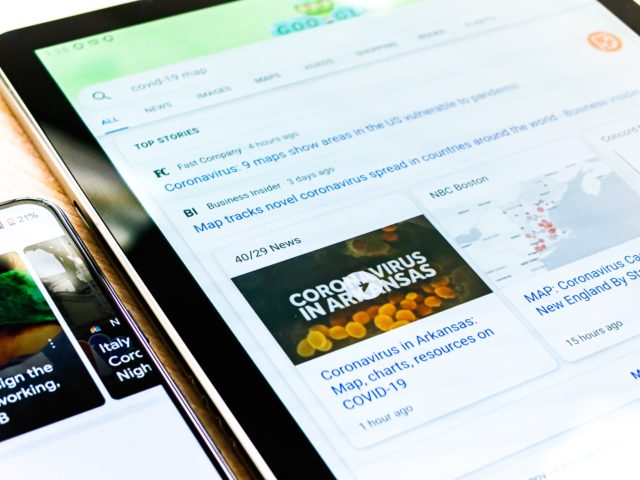Disinformation about COVID-19 vaccines in social networks
Author: Martha R. Villabona works at Subdirección General de Cooperación Territorial e Innovación Educativa of the Spanish Ministry of Education and Vocational Training, where she coordinates the area of multiple literacies.

Vaccination is one of the topics vulnerable to online disinformation. Although opposition to vaccines has existed since they became widespread in the 19th century, there has been a clear increase in the rejection of vaccines since the existence of the Internet 1. This is related to the access to communication channels of millions of people without specialized training. As a result, the World Health Organization 2 identified people’s hesitancy about vaccines as one of the ten threats to global health in 2019. Currently, people who refuse them have a significant presence on social networks, this might of have increased the doubts of many people about whether to vaccinate or not, as they often base their judgment more on what the internet says than on what physicians can tell them. Old arguments reappear on digital platforms with claims that vaccines are ineffective, dangerous or unnecessary, that they cause developmental disabilities such as autism, that they are just part of a business or, beyond that, a tool of a conspiracy. Therefore, it becomes necessary to understand the prevalence and types of arguments being made to combat vaccine misinformation 3.
The media facilitates vaccine-related information and can prepare the public to make informed decisions on health issues. However, the dissemination of misinformation through other communication channels influences the acceptance of the COVID-19 vaccine, as well as the fact that vaccines have been developed very quickly, an unusual development that is difficult to understand for the population that expected a slower process. For these reasons, a survey was conducted in June 2020 4 looking at vaccine acceptance. The respondents were 13,426 people from 19 countries. Males constituted 45.8% and females 53.5% of the study population. More than one third of the respondents (36.3%) had a university degree and 62.4% were between 25 and 54 years of age. As the research states, respondents from China (712) gave the most positive responses towards the COVID-19 vaccine (631), while Russian respondents gave the lowest proportion of positive responses (373 out of 680). Regarding whether they would take a proven, safe and effective vaccine, 71.5% of all respondents answered that they would take it, in particular respondents from China gave the lowest proportion of negative responses (0.7%) while Polish respondents gave the highest (27%).
There has been research on how antivaccine movements use social networks to spread disinformation. One of them analyzed the antivaccine presence on Facebook 5 . It showed that antivaccine pages have fewer followers than pro-vaccine pages, but are more numerous and grow faster. Specifically, they found 317 antivaccine pages with a total of 4.2 million followers versus 124 pro-vaccine pages with a total of 6.9 million followers. To analyze their growth, the researchers counted the links from each page to other pages where vaccines were discussed, and the links from those pages to still others. They concluded that the influence of antivaccine supporters on the undecided is greater than that of pro-vaccine supporters because they spread misinformation faster and have more pages.
The factors that influence doubts about vaccination can be emotional, sociocultural and political and impact to a greater or lesser extent depending on the population’s trust in the politicians who decide the vaccination strategy, in health professionals and in the information transmitted in the media or in the social networks themselves. These are part of our daily communication and are beneficial when health and political authorities inform citizens about a crisis and its solutions. However, when individual political interest is prioritized over public health and safety, it increases distrust and hesitation in citizens’ decision-making, such as getting vaccinated. Therefore, social networks must be depoliticized to combat disinformation about COVID-19 and vaccines 6.
References
- DiResta, R. (November 8, 2018). Of virality and viruses: the anti-vaccine movement and social media. NAPSNet Special Reports. ↩
- World Health Organization (Ed.) (2019). Ten threats to global health in 2019. ↩
- Jamison, A.; Broniatowski, D. A.; Smith, M. C.; Parikh, K. S.; Malik, A.; Dredze, M. & Quinn, S. C. (2020). Adapting and Extending a Typology to Identify Vaccine Misinformation on Twitter. American Journal of Public Health, 110 (3), 331-339 doi: 10.2105/AJPH.2020.305940. ↩
- Lazarus, J., Ratzan, S., Palayew, A., Gostin L., Rabin K., Kimball S. & El Mohandes A. (2021) A global survey of potential acceptance of a COVID-19 vaccine. Nat Med 27, 225-228. doi 10.1038/s41591-020-1124-9 ↩
- Wadman M. (2020). Antivaccine forces gaining online. Science (New York, N.Y.), 368(6492), 699. doi:10.1126/science.368.6492.699 ↩
- Coombs, W.T. (2020). Public Sector Crises: Realizations from Covid-19 for Crisis Communication. Partecipazione e Conflitto, 13, 990-1001. doi: 10.1285/I20356609V13I2P990 ↩